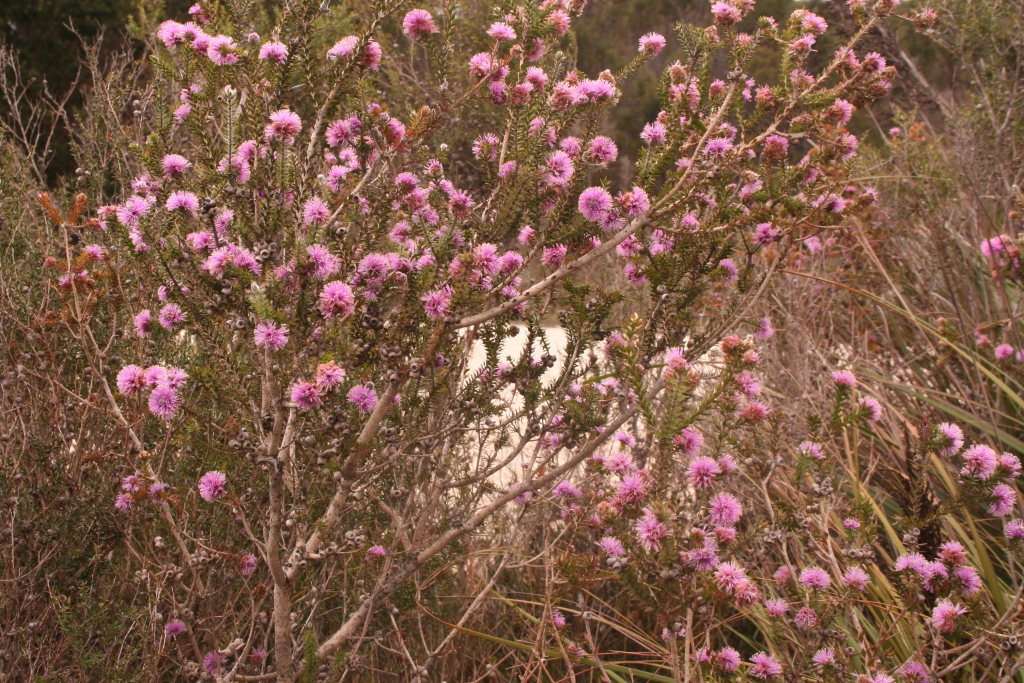Melaleuca gibbosa
Labill. Slender Honey-myrtleWiry shrub to 3 m high, glabrous except for fine indumentum on young stems or scattered hairs; bark hard and fissured on old plants. Leaves decussate, more or less sessile, mostly obovate, 2–6 mm long, 1–4 mm wide, obtuse, gland-dotted and generally distinctly 3-nerved on both surfaces, tip recurved. Inflorescence a short spike, to c. 2 cm long, 1–1.5 cm wide; axis sparsely hairy, growing on into a leafy shoot. Flowers in up to 10 pairs per spike, mostly at the base of lateral leafy stems and subtended by leaf-like bracts, terminal or with tip growing into a leafy shoot; hypanthium attached to the stem across a broad base; stamens 8–20 per bundle, pink to purple, claw c. 0.5–1 mm long, free parts of filaments 2.5–5 mm long. Capsules flask-shaped to spherical, c. 4 mm wide, eventually becoming submerged in the swollen leafy stem. Flowers late spring and summer.
LoM, Wim, GleP, Brid, VVP, GipP, WaP, CVU, GGr, DunT. Also SA, Tas. Grows mostly in wet heathland on sandy soils in south-western Victoria, but with a disjunct occurrence between Seaspray and Dutson in the east.
Spencer, R.D. (1996). Melaleuca. In: Walsh, N.G.; Entwisle, T.J., Flora of Victoria Vol. 3, Dicotyledons Winteraceae to Myrtaceae, pp. 1027–1034. Inkata Press, Melbourne.
 Spinning
Spinning
